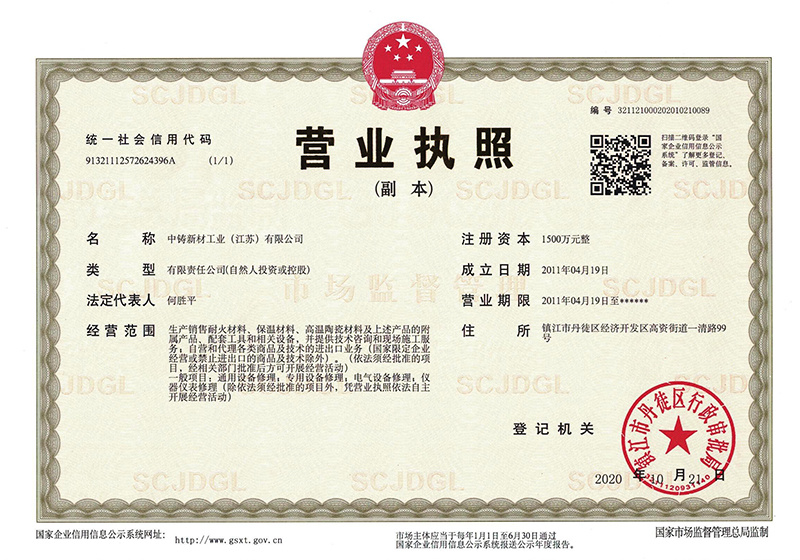News
SINO-FOUNDRY—professional refractory manufacturer
Discover the Top Benefits of Alumina Silicate Based Mastics and Mortars
2025-05-14
Discover the Top Benefits of Alumina Silicate Based Mastics and Mortars Table of Contents 1. Introduction to Alumina Silicate Based Mastics and Mortars 2. What Are Mastics and Mortars? 1. Types of Mastics and Mortars 3. Key Properties of Alumina Silicate 4. Benefits of Alumina Silicate Based Mastics 1. Durability and Longevity 2. Exceptional Thermal Resistance 3. Chem
Discover the Top Benefits of Alumina Silicate Based Mastics and Mortars
Table of Contents
1. Introduction to Alumina Silicate Based Mastics and Mortars
2. What Are Mastics and Mortars?
1. Types of Mastics and Mortars
3. Key Properties of Alumina Silicate
4. Benefits of Alumina Silicate Based Mastics
1. Durability and Longevity
2. Exceptional Thermal Resistance
3. Chemical Resistance to Harsh Environments
5. Applications in Various Industries
1. In the Metallurgy Industry
2. In the Energy Sector
6. How to Choose the Right Alumina Silicate Based Mastic or Mortar
7. Frequently Asked Questions
8. Conclusion
Introduction to Alumina Silicate Based Mastics and Mortars
Alumina silicate based mastics and mortars are becoming increasingly popular in various industrial applications due to their unique properties. These materials are essential in construction, particularly in environments that require high-temperature resistance and durability. This article delves into the numerous benefits that these materials offer, particularly in the metallurgy and energy sectors.
What Are Mastics and Mortars?
Mastics and mortars are both used as bonding agents in construction and industrial applications. While they serve similar purposes, they differ primarily in composition and application.
Types of Mastics and Mortars
1. **Mastics**: These are paste-like substances that can be applied as adhesives or sealants. They are typically used to fill gaps, joints, or as a coating for surfaces.
2. **Mortars**: Mortars are more rigid and are primarily used to bind building materials together, such as bricks or stones.
Both types can be formulated with alumina silicate to enhance their performance in demanding conditions.
Key Properties of Alumina Silicate
Alumina silicate is a naturally occurring mineral that exhibits several properties making it ideal for high-performance applications:
- **High thermal stability**: Maintains integrity in extreme temperatures.
- **Excellent insulation**: Reduces heat transfer, making it suitable for energy-efficient applications.
- **Low thermal conductivity**: Prevents energy loss in various industrial processes.
- **Acid and alkali resistance**: Offers durability against harsh chemicals.
These properties position alumina silicate based mastics and mortars as superior choices for industrial applications.
Benefits of Alumina Silicate Based Mastics
Understanding the benefits of alumina silicate based mastics is crucial for industries looking to enhance their operational efficiency and reduce costs.
Durability and Longevity
One of the primary advantages of alumina silicate based mastics is their **exceptional durability**. Unlike conventional materials that may degrade under high temperature or chemical exposure, these mastics maintain their structural integrity over extended periods. This longevity translates to reduced refurbishment costs and less downtime for industries.
Exceptional Thermal Resistance
Alumina silicate based mastics are engineered to withstand extreme temperatures, making them an ideal choice for applications in **furnaces, kilns, and other high-temperature environments**. Their thermal resistance helps in maintaining operational efficiency while protecting other materials from heat damage.
Chemical Resistance to Harsh Environments
In industrial settings, materials are often exposed to corrosive substances. Alumina silicate based mastics exhibit remarkable **chemical resistance**, ensuring that they remain effective even in challenging environments. This property is particularly valuable in metallurgy and energy sectors where chemical exposure is common.
Applications in Various Industries
Alumina silicate based mastics and mortars find applications across various sectors due to their superior properties.
In the Metallurgy Industry
In metallurgy, these mastics are used for **industrial insulation** and as adhesives in furnace linings. Their ability to tolerate high temperatures and resist chemical reactions makes them indispensable in processes such as smelting and casting.
In the Energy Sector
The energy sector, particularly in **power generation**, utilizes alumina silicate based mortars for equipment insulation and protection. Their thermal efficiency contributes to energy savings and improved system performance.
How to Choose the Right Alumina Silicate Based Mastic or Mortar
Selecting the appropriate alumina silicate based mastic or mortar requires careful consideration. Here are key factors to keep in mind:
- **Temperature Resistance**: Ensure the product can withstand the specific temperature ranges of your application.
- **Chemical Compatibility**: Assess the chemical environments the material will encounter.
- **Application Method**: Determine whether the mastic or mortar can be applied easily and fits the project's requirements.
- **Longevity and Durability**: Look for products reputed for long service life in industrial conditions.
By evaluating these factors, you can make a more informed choice that aligns with your operational needs.
Frequently Asked Questions
1. **What is the difference between mastics and mortars?**
Mastics are paste-like and used primarily for sealing or bonding, while mortars are more rigid and are mainly used for binding building materials.
2. **What are the main benefits of using alumina silicate based mastics?**
These mastics offer exceptional durability, high thermal resistance, and chemical resistance, making them ideal for high-performance applications.
3. **Where are alumina silicate based mortars commonly used?**
They are widely used in industries such as metallurgy, energy, and construction, particularly in high-temperature applications.
4. **How do I choose the right alumina silicate based mastic for my project?**
Consider factors like temperature resistance, chemical compatibility, application method, and durability to select the right product.
5. **Are alumina silicate based mastics environmentally friendly?**
Many formulations are designed to minimize environmental impact, but it's essential to check specific product details for eco-friendliness.
Conclusion
Alumina silicate based mastics and mortars present significant advantages for industries demanding high-performance materials. Their superior durability, thermal resistance, and chemical stability make them essential in metallurgy and energy applications. By choosing the right product, organizations can enhance operational efficiency, reduce costs, and ensure long-lasting performance in challenging environments. Investing in these materials is not just a choice; it’s a step towards optimizing industrial operations for the future.
Related News
2024-11-05
Zhongzhu New Materials Industry sincerely invites you to participate in the 24th International Forum and Exhibition on Recycled Metals.

WeChat public account

View mobile website
Address : No. 99, Yiqing Road, Gaozi Street, EconomicDevelopment Zone, Dantu District, Zhenjiang City
Fax : +86-511-85683066
E-mail : sales@sfr168.com
Website : https://www.sfr168.com
Copyright©2023 Sino-Foundry Refractory(Jiangsu) Co.,Ltd. Powered by:www.300.cn
Copyright©2023 Sino-Foundry Refractory(Jiangsu) Co.,Ltd.
IPV6 | SEO | Cloud Information



